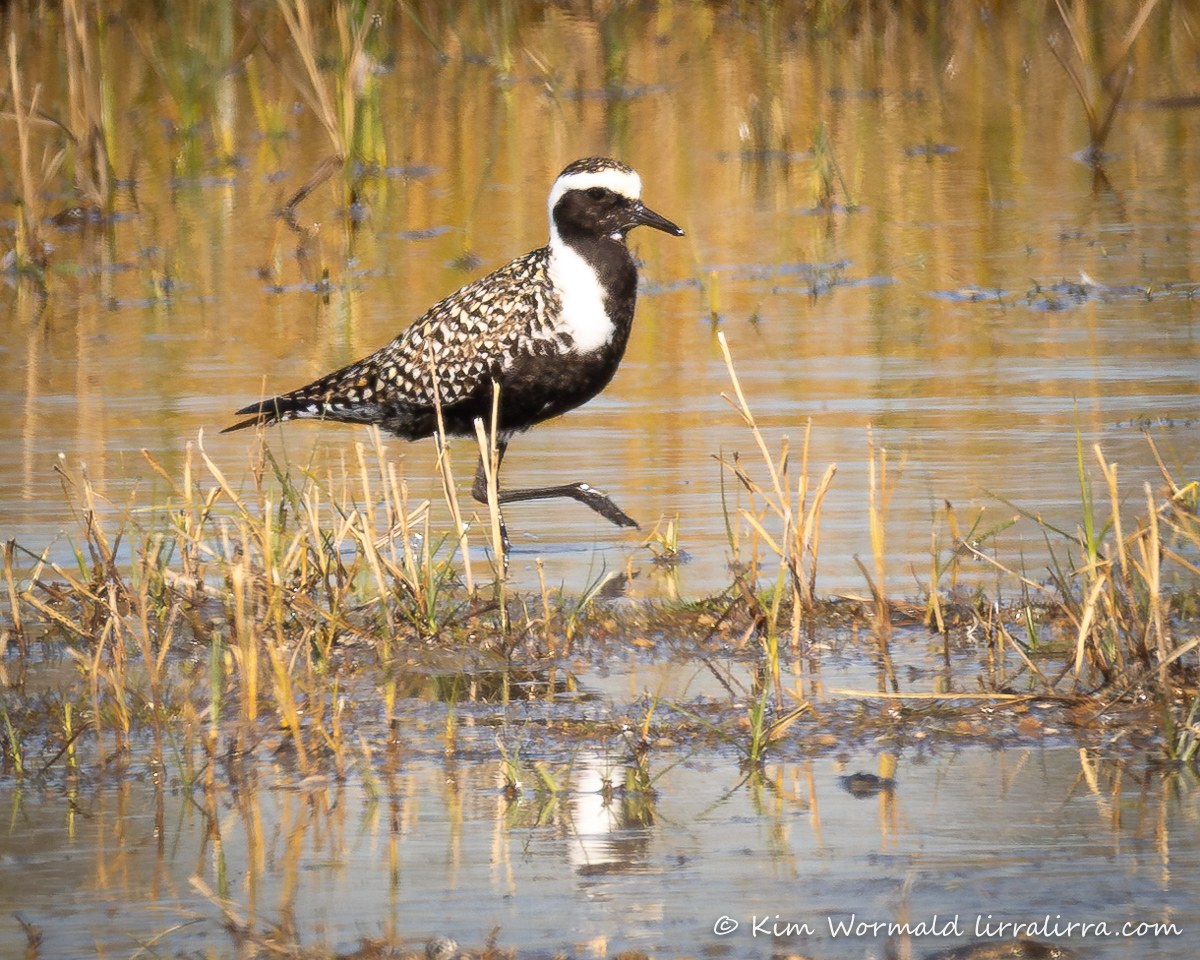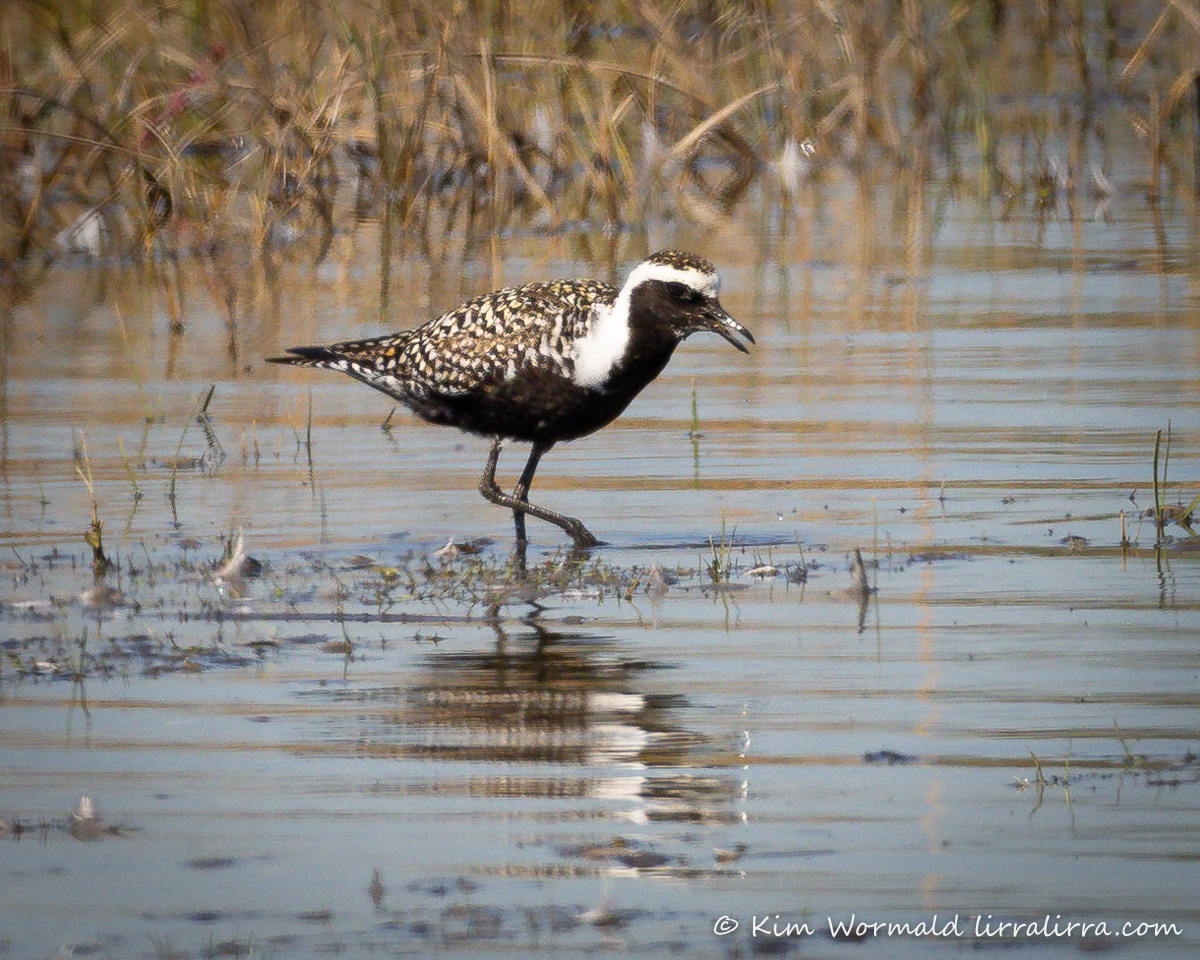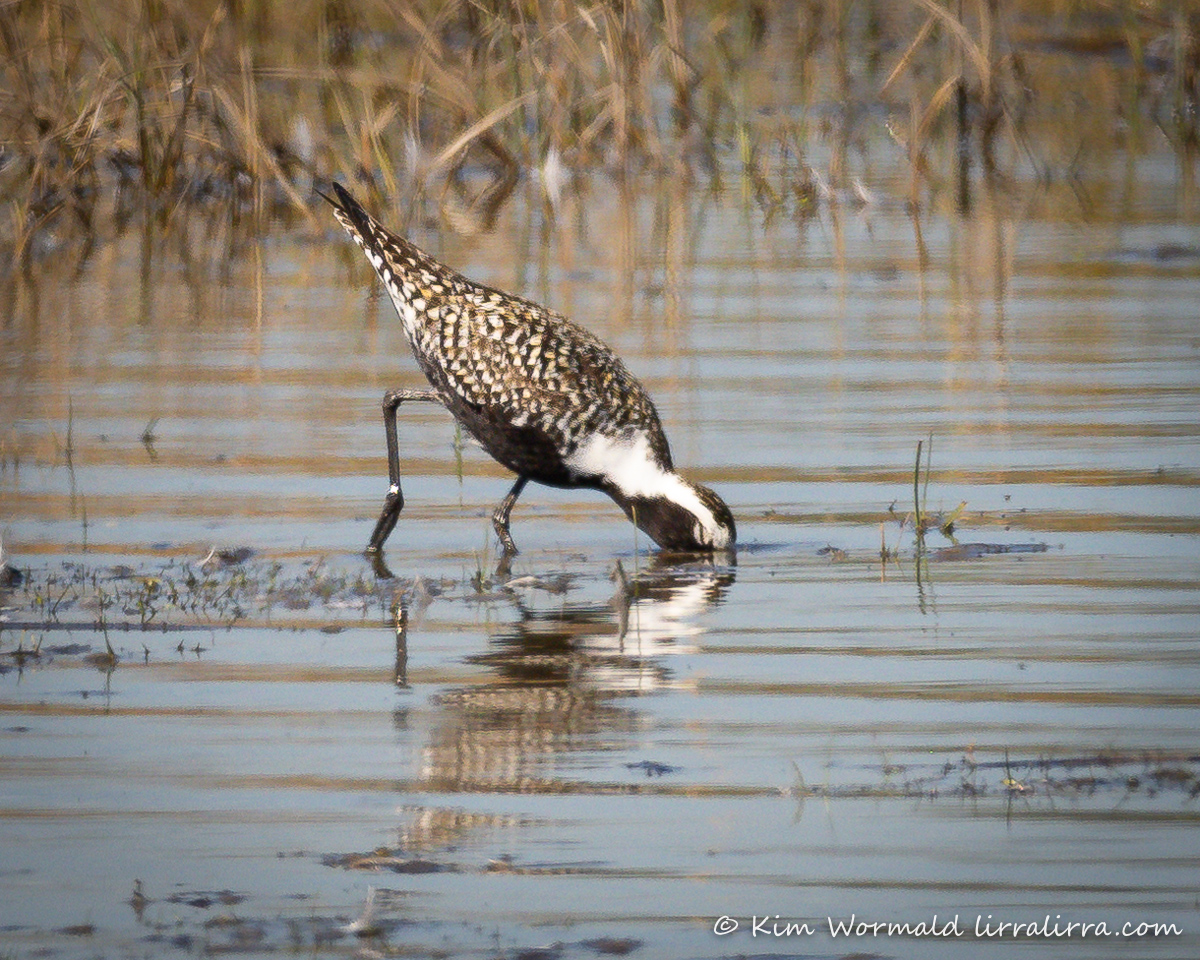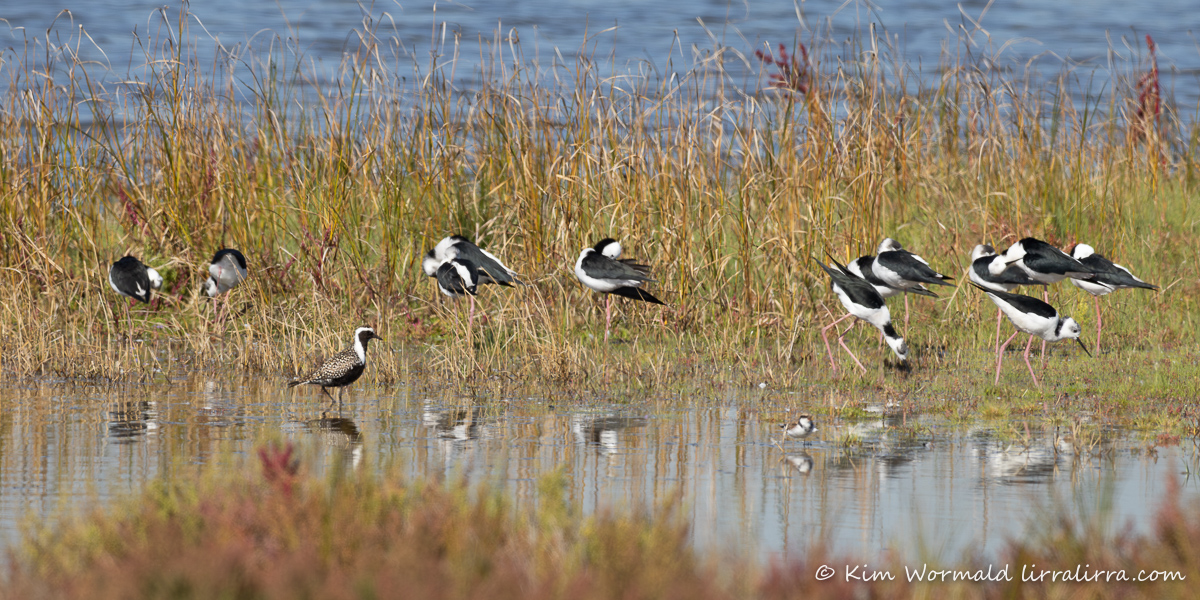The American Golden Plover is an exceedingly rare vagrant that somehow wound up in the wrong hemisphere. This splendid plover was at the Western Treatment Plant in its breeding colours, yet another rare treat as we so rarely see waders in their breeding colours.

1/1600, f/9, ISO 800
Canon R5, Canon RF 600mm f/4 L IS USM
A friend and I (hi Carol!) like making last minute decisions about heading out with our cameras. Our trip to Werribee’s Western Treatment Plant this week serendipitously coincided with the sighting of an American Golden Plover. I think the photograph above is my favourite of the plover as the lighting enhanced the golden colours on its crown and its back. I was a long way from the bird, 60m at a guess, and the day was inordinately hazy which made getting a sharp photograph pretty much impossible.

1/1600, f/7.1, ISO 400
Canon R5, Canon RF 600mm f/4 L IS USM
It waded through the shallow water at the edge of the reeds and was often out of sight, and often had me wishing I was a least a little bit taller. There were several other birders there when we arrived and one of them was kind enough to suggest I moved to where he had been standing as although it was further away it gave a better view.

1/1600, f/7.1, ISO 400
Canon R5, Canon RF 600mm f/4 L IS USM
The American Golden Plover was foraging for invertebrates and would regularly duck its head beneath the water for a tiny morsel of food. The patterns on its back are quite exquisite.

1/2000, f/9.0, ISO 800
Canon R5, Canon RF 600mm f/4 L IS USM
The image above shows the American Golden Plover with a small group of Pied Stilts and, if you look closely, a Black-fronted Dotterel. I’ve included this shot to illustrate the size of the plover as well as to give a broader look at where it was foraging. It was surprisingly bolshie and quite often flew towards the stilts and sent them flying.
I was super lucky to see the American Golden Plover, especially as it has not been sighted for the past few days. Hopefully it has found its way to another pond, though other suggestions I have seen online include that it may have been taken by a Swamp Harrier that had hassled it, or scared off by the sight of an on-lead dog that was apparently wandering about in the vicinity with a couple who didn’t seem to realise what a huge issue it is to have a dog at this fabulous Ramsar site. Sigh.
American Golden Plovers usually migrate between Alaska/northern Canada and South America. They are an extremely rare vagrant with only three previous sightings confirmed. Various other vagrants turn up from time to time, sometimes their navigation systems seem to become disturbed, or they are blown off course by high winds. I’ll keep you updated if I find out anything more about this stunning little shorebird.
Happy birding, Kim
~ Prints and gifts Lirralirra Shop
~ Facebook page Kim Wormald – lirralirra
~ Facebook group Ethical Bird Photography

What a strange experience for this bird to end up so far from home, brawling with the locals and dining on foreign cuisine. Well done for getting these tricky shots, it’s a beautiful bird!
That’s a perfect way of putting it. It went missing for a few days which was a worry but it turned up again and will hopefully be able to find its way home.
What an absolutely wonderful sighting – for you and for us.
Many, many thanks.
A very, very unexpected pleasure
As I was admiring your amazing photos, Kim, my eye wandered over to a nearby shelf, and I suddenly noticed my large tiger cowrie shell – which I’ve had for years – and I realised the brown spotted pattern on this lovely shell is very similar to the plumage pattern on the American Plover. No connection between the marine and the avian, of course – just more proof that Nature is such a superb designer.
Marvellous patterns below the sea and up in the air!
What an interesting similarity to notice! I always especially liked cowrie shells too, and still have one from a childhood seaside holiday when such things used to be sold.
Oh wow! What an amazing sighting! I think my heart skipped a little beat when I saw this beautiful photo. Thanks for sharing, Kim.
My pleasure Liz! I can still hardly believe I was lucky enough to see it, and am pleased I managed to get some half decent photographs to share.